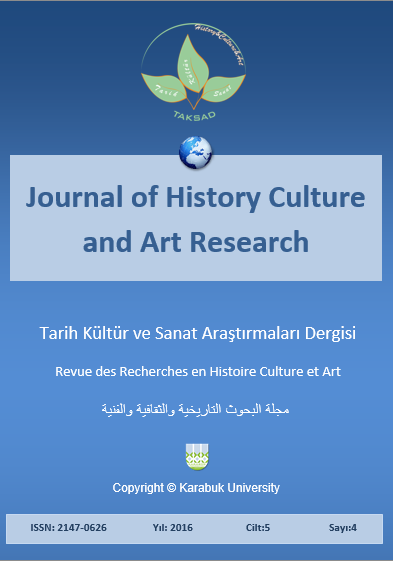The Impression and Affection of Ilia Abumazi from Omar Khayam Neishabouri
DOI:
https://doi.org/10.7596/taksad.v5i4.591Keywords:
Omar Khayam Neishabouri, Ilia Abumazi, The Influence of Omar Khayam, Omar Khayam Poets.Abstract
Abstract
Mankind has always thought about the different opinions regarding the world and its ultimate consequence over the history. Gradually, these thoughts have been established in testing criterion of other works so that the nationality of the thinking never paid attention in this regard. In addition, Abol-aala Moaari and Omar Khayam Neishabouri were considered as the most sophisticated scholars of the literary and thinking fields because the thoughts of these scholars had the most potential influence on the next generation efficiently; one of the most outstanding influences of these works was subjected to Abumazi poems. Abumazi the contemporary Lebanon-Mohjari poet as “Tasavol and Tafavol” has written many various poems regarding to the philosophical subjects in terms of the Iranian famous poet Omar Khayam Neishabouri. For the reason, the main purpose of the present study was to investigate the affection aspects of Abumazi poems from Omar Khayam Neishabouri; this has been also achieved as comparative in this study.
References
Abumazi Ilia (1982). Divan of Abumazi Deraseh Zahir Mirza. Beirut: Dar Aloudeh.
Almaaoush Salem (1997). Ilia Abumazi Between East and West (1st printing). Beirut: Institution of Behsoun.
Ehsan Abbas and NajmYousef (1982). AlsherAlarab Fi Almohjar, Beirut: Dar Sader.
Hedayat Sadegh (1934). Songs of Khayam (1st printing). Tehran: Amirkabir Publication.
Khalil Jabran, Jabran (2012). AlmajmouehAlkamelAlmoalefat: Beirut.
Rami Ahmad (2000). Khayam Quatrains, Beirut: Dar Aloudeh.
Zeif Shoughi (2012). Darasat Fi SherAlarabiAlmoaser (9th printing). Cairo: Dar Almaaref.
Downloads
Published
How to Cite
Issue
Section
License
All papers licensed under Creative Commons 4.0 CC-BY.- Share — copy and redistribute the material in any medium or format
- Adapt — remix, transform, and build upon the material for any purpose, even commercially.
Under the following terms:
Attribution — You must give appropriate credit, provide a link to the license, and indicate if changes were made. You may do so in any reasonable manner, but not in any way that suggests the licensor endorses you or your use.
- No additional restrictions — You may not apply legal terms or technological measures that legally restrict others from doing anything the license permits.







